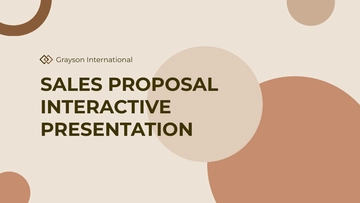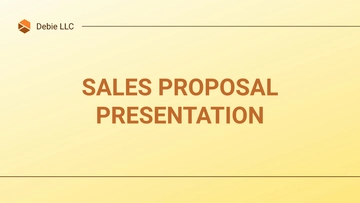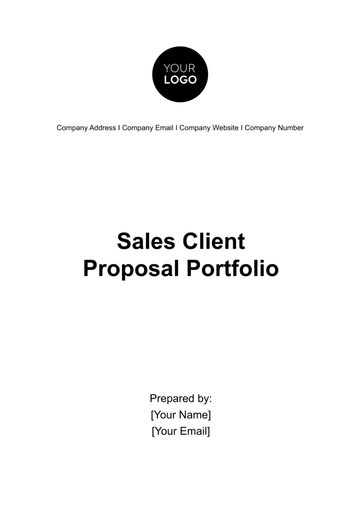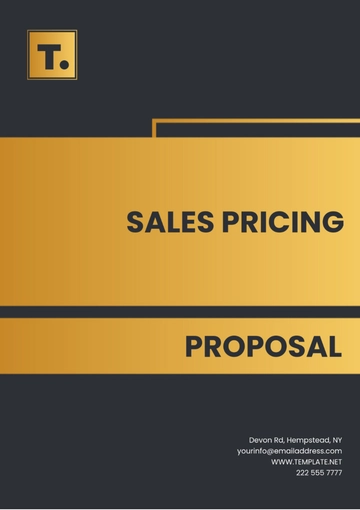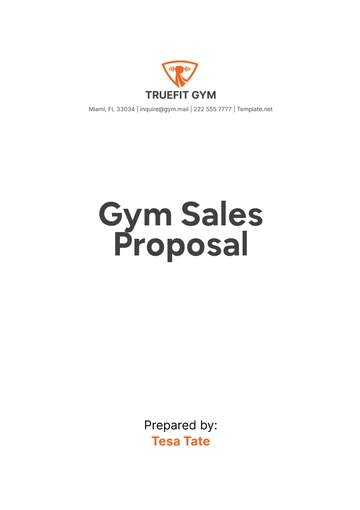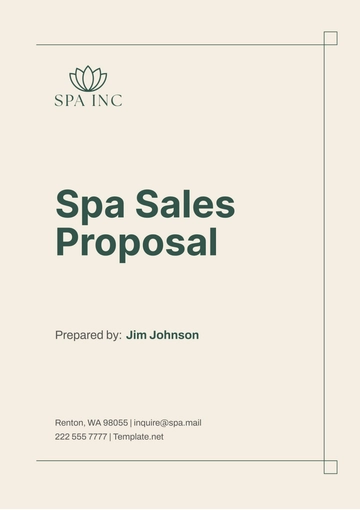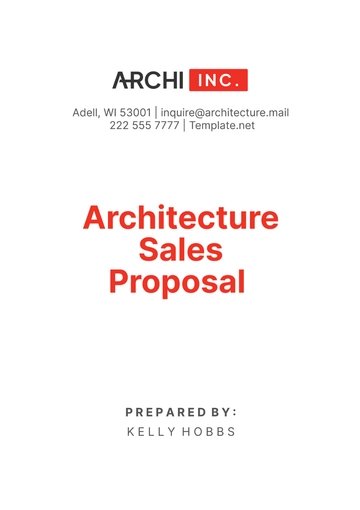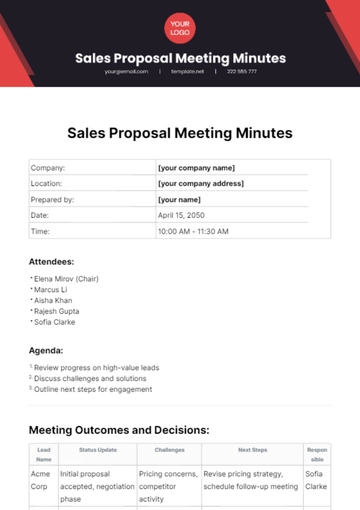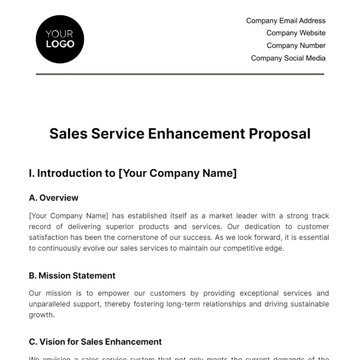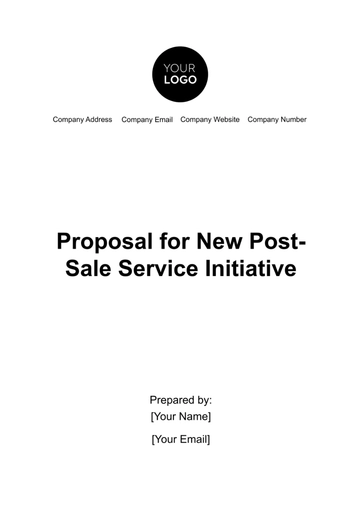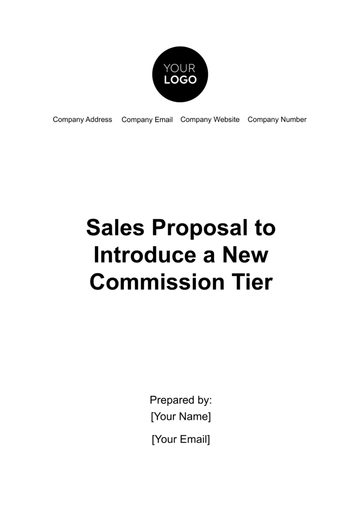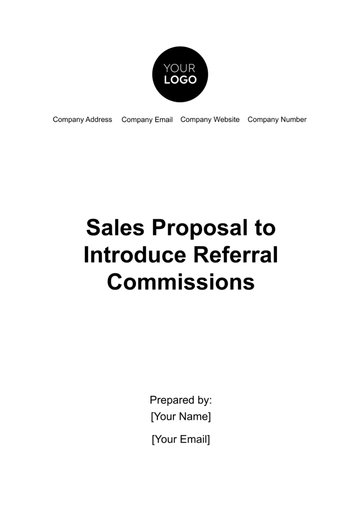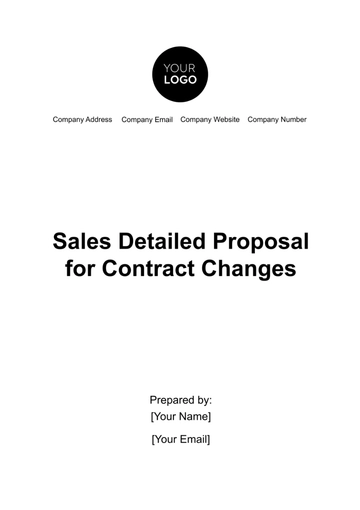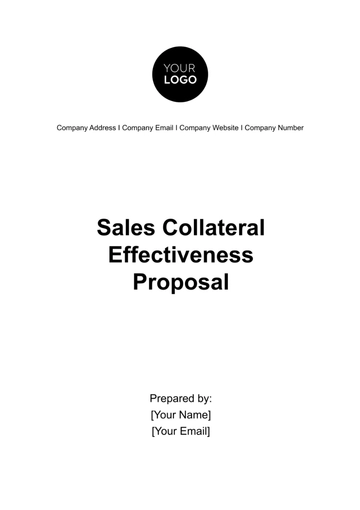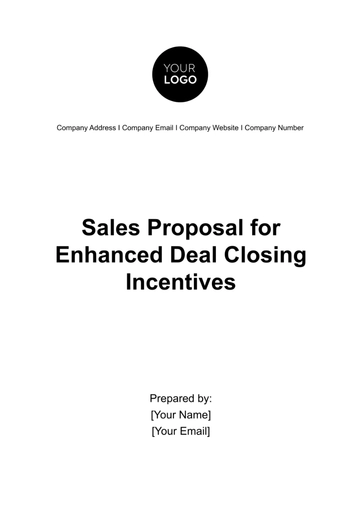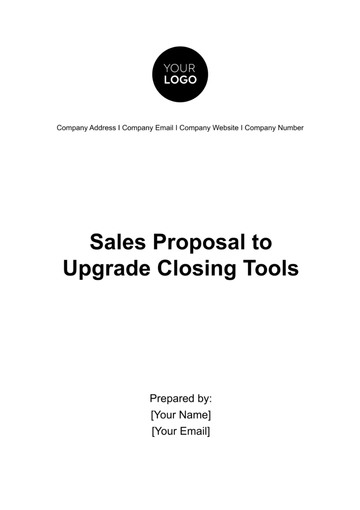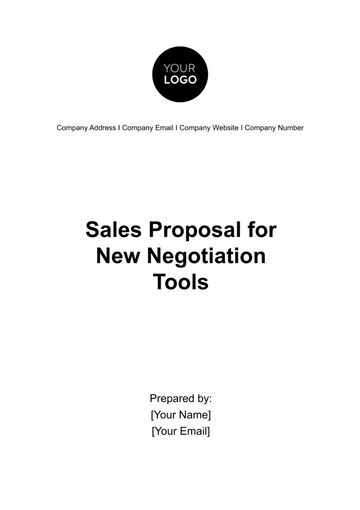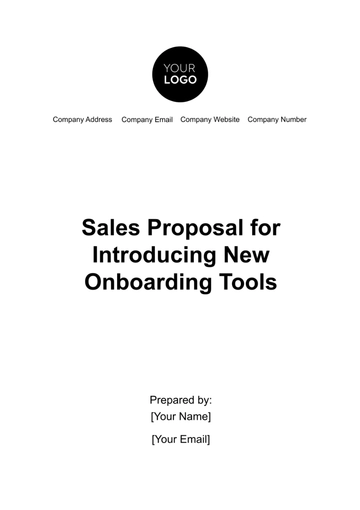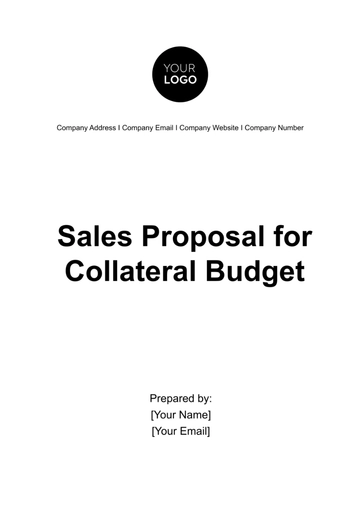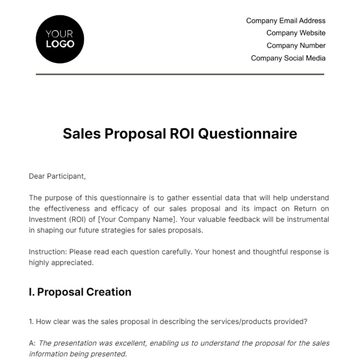Free Sales Proposal Protocol for Large Sales
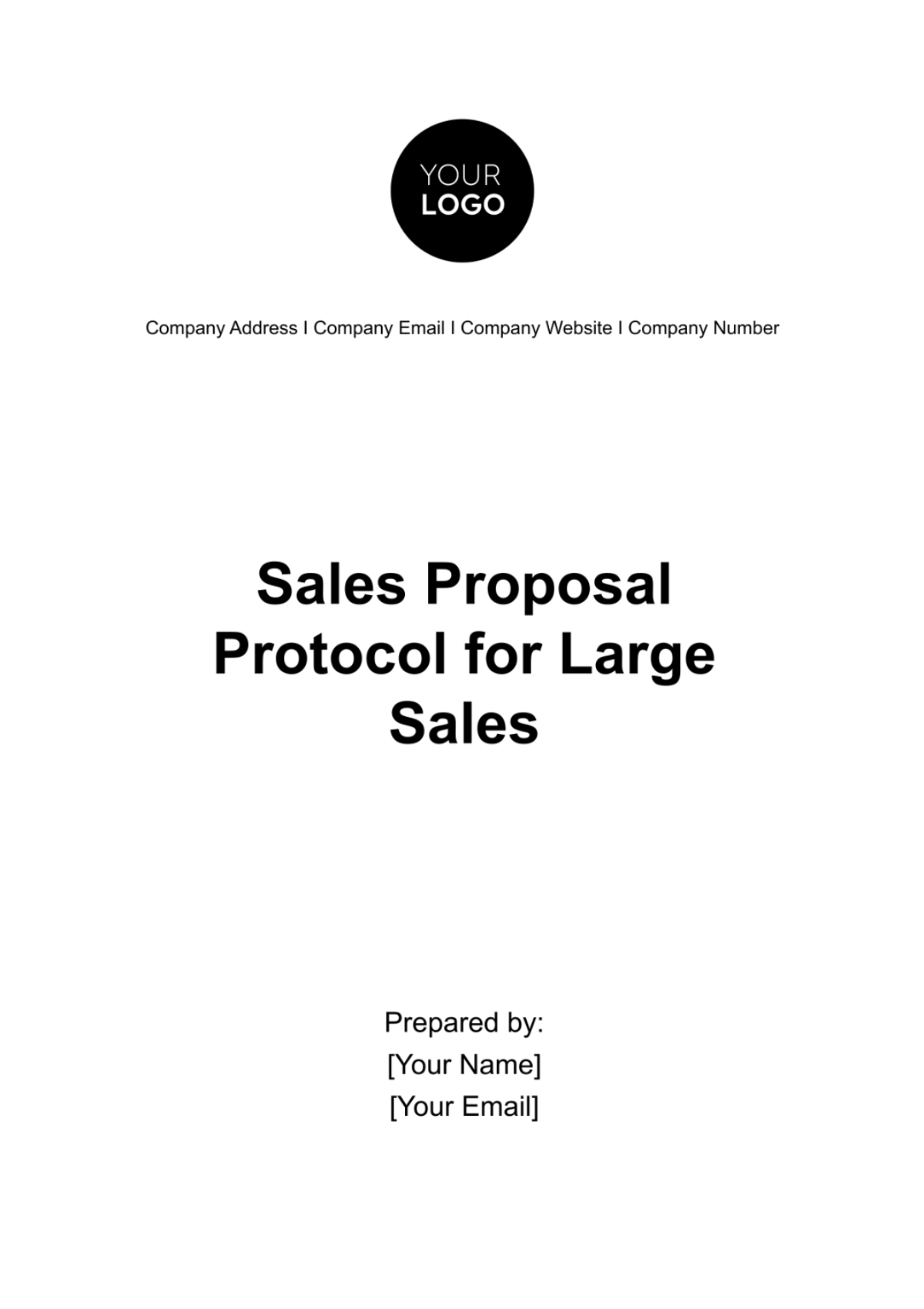
This protocol aims to streamline the process of creating an effective sales proposal for large sales, ensuring that all relevant information and persuasive language are contained within the proposal. This systematic plan of approach provides a seamless and efficient way to communicate the value of our products or services to potential clients.
I. Introduction to the Sales Proposal Protocol for Large Sales
In today's competitive business landscape, where high-stakes deals define success, the art of crafting and delivering compelling sales proposals has never been more critical. Welcome to the Sales Proposal Protocol for Large Sales, a meticulously designed framework aimed at elevating our approach to securing significant business opportunities.
A. Overview
Large-scale sales proposals stand as gateways to forging invaluable partnerships and capturing substantial revenue streams. In this ever-evolving landscape, where the stakes are high and the competition fierce, it becomes imperative to navigate the intricacies of large sales with precision and finesse. Our Sales Proposal Protocol is your guiding beacon through this complex terrain. It is an embodiment of our commitment to excellence, poised to optimize every facet of preparing, presenting, and ultimately sealing the deal in the realm of high-value sales.
B. Purpose and Objectives
At the heart of this protocol lies a singular purpose: to empower our sales team with a systematic, data-driven approach that transforms potential into reality. By adhering to this protocol, we embark on a journey with three overarching objectives:
Enhanced Proposal Quality: We recognize that large-scale sales proposals must not only capture attention but also command respect. Our protocol focuses on crafting proposals that resonate with precision, articulating value propositions that are impossible to ignore.
Client Engagement: In large sales, relationships are paramount. We equip you with the tools and strategies to foster meaningful engagement with prospective clients. It's about more than just a proposal; it's about building trust and confidence.
Increased Win Rate: In the world of high-value deals, success is not measured in attempts but in victories. Our protocol is engineered to boost your win rate by refining the entire sales proposal process, from inception to closure.
C. Scope and Applicability
This protocol is not just a guideline; it's a map to success that every member of our sales team can follow with unwavering confidence. Whether you are a seasoned sales veteran or an emerging talent, this protocol applies to all who aspire to thrive in the realm of large-scale sales. It is a comprehensive framework that provides standardized steps and best practices, ensuring that we approach each opportunity with consistency and excellence.
At the heart of our protocol lies the understanding that large sales are not merely transactions; they are transformational partnerships waiting to be forged. Together, we will navigate the intricate path of large sales, armed with the knowledge, strategies, and methodologies that will set us apart in this demanding arena. This protocol is more than just a guide; it is a commitment to excellence, an assurance of our dedication to securing and thriving in the world of large sales.
II. Preparing a Comprehensive Sales Proposal
In the world of large-scale sales, where precision and relevance are paramount, the process of preparing a comprehensive sales proposal stands as the linchpin of success. It is within this section that we explore the foundational steps that underpin the creation of a proposal that resonates, addresses client needs, and charts the course to victory.
A. Needs Assessment and Research
The foundation of any successful large-scale sales proposal is knowledge, and knowledge begins with research.
Conducting In-Depth Research: In the journey toward crafting a proposal that leaves an indelible mark, the first step is to embark on a voyage of discovery. Extensive research into the prospective client's organization is not just advised; it's imperative. Dive deep into their industry, immerse yourself in their challenges, and understand where they stand in the marketplace. This foundational research serves as the bedrock upon which your proposal will be built.
Identifying Specific Pain Points: Within every organization lies a unique set of challenges, pain points, and aspirations. To create a proposal that resonates, you must uncover and comprehend these intricacies. It's not just about hearing the client; it's about listening, empathizing, and understanding their world. This requires open channels of communication, a willingness to engage, and an unwavering commitment to comprehending their business landscape.
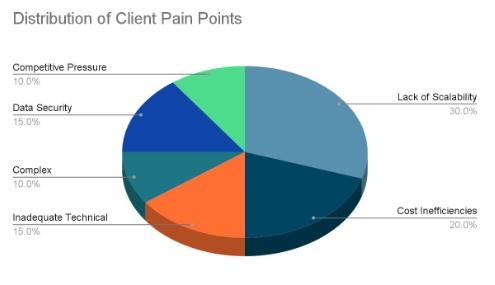
B. Solution Design and Tailoring
Armed with the insights garnered from research, the journey toward proposal excellence continues with the art of solution design and tailoring.
Customized Solutions: In the realm of large-scale deals, one size does not fit all. Each proposal must be a bespoke creation, meticulously tailored to address the client's unique needs and challenges. The essence of this step lies in the art of customization. It's about sculpting solutions that precisely align with the contours of the client's requirements. The proposal you craft should resonate as a solution that was designed exclusively for them.
Team Collaboration: In the pursuit of proposal perfection, collaboration becomes a cornerstone. The art of solution design extends beyond individual expertise; it encompasses the collective genius of cross-functional teams. Engage with experts from diverse domains - marketing, technical, and beyond - to ensure that the proposed solution not only aligns with the client's requirements but can also be effectively delivered. Collaboration is the catalyst that transforms ideas into actionable solutions.
In the realm of large-scale sales, where intricacies abound and precision is revered, these steps become the guiding stars. Through research and customization, we lay the foundation of a proposal that resonates deeply with our prospective clients. Collaboration ensures that our solutions are not just theoretical but executable. These are the building blocks of a comprehensive sales proposal that has the power to unlock doors, forge partnerships, and redefine success in the world of large sales.
III. Crafting the Proposal Document
In the realm of large-scale sales, where precision is paramount and details are the bedrock of trust, the art of crafting the proposal document takes center stage.
A. Executive Summary
Concise Overview: At the forefront of your proposal stands the Executive Summary—a succinct yet powerful introduction to the narrative that follows. This section is not merely a formality; it is the portal through which the client embarks on a journey of discovery. In this summary, your mission is to provide a concise overview of the proposal, encapsulating its essence and setting the stage for what lies ahead.
Demonstrating Value: Beyond mere brevity, the Executive Summary is a canvas upon which you paint a picture of value. Here, you must emphasize how the proposed solution directly addresses the client's challenges and objectives, illustrating the potential value they will reap from this partnership. It's not about telling; it's about demonstrating the transformative power of your proposal.
B. Detailed Solution Presentation
Comprehensive Explanation: As the narrative unfolds, the Detailed Solution Presentation becomes the epicenter of your proposal's substance. Here, every facet of the proposed solution must be meticulously detailed. Provide a comprehensive explanation of its features, benefits, and the intricacies of its implementation. Imagine the questions the client might pose and preemptively address them with clarity and authority.
Pricing and Terms: Transparency becomes your guiding principle when presenting pricing options and terms. Your proposal should be a beacon of clarity, leaving no room for ambiguity or uncertainty. Define pricing options clearly and concisely, along with payment terms, schedules, and any discounts that may apply. Be prepared to engage in discussions and negotiations, but ensure that your initial presentation is comprehensive.
C. Client Testimonials and Case Studies
Endorsements: A proposal is not just a collection of words; it is a declaration of trustworthiness. In this section, include endorsements from clients who have experienced the transformative power of your solutions. These endorsements serve as the pillars of credibility upon which your proposal stands.
Real-World Examples: Beyond endorsements, weave the tapestry of your proposal with real-world examples. Case studies that illustrate how your solutions have successfully addressed challenges for clients in similar industries provide tangible evidence of your capabilities. These aren't just stories; they are testaments to your ability to deliver results.
D. Project Timeline and Milestones
Visual Representation: The journey detailed within your proposal must be visually compelling. A visual representation of the project timeline, adorned with key milestones and delivery dates, offers clarity and comprehension. It transforms complex ideas into a roadmap that the client can follow with ease.
Managing Expectations: While the visual timeline serves as a guide, it is also a promise. It must align with the client's expectations and business objectives. Setting realistic milestones and deadlines is an art in itself, one that requires a keen understanding of your capabilities and the client's needs.
In the meticulous crafting of your proposal document, you are not just presenting information; you are weaving a narrative of trust, clarity, and value. Every word, every detail, and every visual element serves a purpose—to create a document that not only informs but also inspires confidence and compels action. This is the art of crafting proposals in the realm of large sales, where precision and professionalism reign supreme.
IV. Presenting and Communicating the Proposal
The culmination of our efforts—where words meet action—occurs during the presentation of the proposal. In this section, we delve into the art of presenting and communicating the proposal effectively, setting the stage for a successful engagement.
A. Meeting Preparation
Compelling Presentation: Your presentation is not just a complement to the proposal document; it is a living, breathing embodiment of your proposal's essence. Craft a presentation that not only summarizes key points but also anticipates and addresses potential questions and objections. Prepare with the precision of a surgeon, ensuring that your presentation is compelling, concise, and comprehensive.
Active Listening: While you present, never forget that the presentation is a dialogue, not a monologue. Active listening is your superpower. As you articulate your proposal, pay heed to the client's feedback and questions. Be responsive and adaptive, ready to pivot when the winds of conversation shift.
B. Client Engagement
Effective Communication: Effective communication is the bridge that connects your proposal to the client's understanding. During the presentation, maintain clarity, simplicity, and transparency in your communication. Address any concerns or doubts the client may harbor with promptness and precision. The ability to make complex concepts digestible is the hallmark of a true communicator.
Building Rapport: Beyond the words and numbers, lies the realm of rapport. The art of building rapport is about more than just pleasantries; it's about demonstrating a profound understanding of the client's challenges and objectives. Show genuine interest in their success, for in their success lies ours. Through empathy and insight, we forge connections that transcend the transactional.
C. Addressing Concerns and Negotiations
Graceful Handling: Objections are not roadblocks; they are stepping stones. When objections arise, handle them with grace and professionalism. Acknowledge concerns sincerely and provide well-reasoned responses and solutions. This is not a battle of words; it is an exercise in building trust and resolving doubts.
Successful Negotiations: Negotiations are the crucible in which deals are forged. Approach negotiations with the mindset of creating a win-win outcome. Flexibility is your ally, but not at the cost of your organization's interests. Navigating negotiations requires a delicate balance, one that protects our interests while fostering a spirit of partnership.
As you stand before your client to present the proposal, remember that this is the moment where words become action, and trust is cemented. Your presentation is not just a delivery; it is a declaration—a declaration of your commitment to addressing their needs, your dedication to effective communication, and your readiness to navigate the challenges together. In this moment, you are not just presenting a proposal; you are forging a partnership. This is the essence of presenting and communicating proposals effectively in the realm of large sales.
V. Follow-Up and Closing
The conclusion of the proposal presentation marks the threshold of decision-making. It's the moment where clarity, commitment, and responsiveness converge. In this section, we explore the art of post-presentation follow-up and the crucial steps leading to a successful closing.
A. Post-Presentation Follow-Up
Follow-Up Email: The follow-up email is your first step in post-presentation engagement. It serves as both a recap and a bridge. In this email, summarize the proposal and the meeting, reiterating the key points discussed. Use this opportunity to express your continued commitment to the client's success and to offer your readiness to address any further questions or concerns. Your follow-up email is more than a formality; it's a gesture of professionalism and care.
Reassurance: Beyond the words you write, the follow-up email is an act of reassurance. Reassure the client of your unwavering dedication and responsiveness. Let them know that you are not just a vendor; you are a partner committed to their journey.
B. Decision-Making and Closing
Managing the Decision Process: The decision-making process is often a complex interplay of internal discussions, evaluations, and deliberations. Stay engaged during this crucial phase. Be available to provide additional information, address any lingering doubts, and facilitate any required discussions. Your presence during this process reinforces your commitment and underscores your professionalism.
Closing: The closing phase is where the deal transforms from potential to reality. Be attentive to the client's signals and requirements. Navigate this phase with finesse, seeking a mutually beneficial outcome. The art of closing is not about pressure; it's about alignment. It's the moment when both parties affirm their commitment to the journey ahead.
In the realm of large sales, the journey is not merely a transaction; it's a partnership. The follow-up and closing stages are the culmination of your dedication to understanding, communicating, and delivering value. As you guide the client toward a decision, remember that this is the moment where trust solidifies. Your professionalism, responsiveness, and commitment to their success will shine brightly in these concluding stages. This is the art of follow-up and closing in the world of large-scale sales—where every action is a testament to your dedication to the client's journey.
- 100% Customizable, free editor
- Access 1 Million+ Templates, photo’s & graphics
- Download or share as a template
- Click and replace photos, graphics, text, backgrounds
- Resize, crop, AI write & more
- Access advanced editor
Unleash your selling potential with Template.net's Sales Proposal Protocol for Large Sales Template. This easily editable and customizable template transforms your sales approach, editable in our AI Editor Tool for meticulous personalizing. Experience optimized proposal creation, ensuring winning results. Join our growing number of satisfied Marketing Professionals leveraging this dynamic tool. Transform your sales journey today with Template.net.
You may also like
- Business Proposal
- Research Proposal
- Proposal Request
- Project Proposal
- Grant Proposal
- Photography Proposal
- Job Proposal
- Budget Proposal
- Marketing Proposal
- Branding Proposal
- Advertising Proposal
- Sales Proposal
- Startup Proposal
- Event Proposal
- Creative Proposal
- Restaurant Proposal
- Blank Proposal
- One Page Proposal
- Proposal Report
- IT Proposal
- Non Profit Proposal
- Training Proposal
- Construction Proposal
- School Proposal
- Cleaning Proposal
- Contract Proposal
- HR Proposal
- Travel Agency Proposal
- Small Business Proposal
- Investment Proposal
- Bid Proposal
- Retail Business Proposal
- Sponsorship Proposal
- Academic Proposal
- Partnership Proposal
- Work Proposal
- Agency Proposal
- University Proposal
- Accounting Proposal
- Real Estate Proposal
- Hotel Proposal
- Product Proposal
- Advertising Agency Proposal
- Development Proposal
- Loan Proposal
- Website Proposal
- Nursing Home Proposal
- Financial Proposal
- Salon Proposal
- Freelancer Proposal
- Funding Proposal
- Work from Home Proposal
- Company Proposal
- Consulting Proposal
- Educational Proposal
- Construction Bid Proposal
- Interior Design Proposal
- New Product Proposal
- Sports Proposal
- Corporate Proposal
- Food Proposal
- Property Proposal
- Maintenance Proposal
- Purchase Proposal
- Rental Proposal
- Recruitment Proposal
- Social Media Proposal
- Travel Proposal
- Trip Proposal
- Software Proposal
- Conference Proposal
- Graphic Design Proposal
- Law Firm Proposal
- Medical Proposal
- Music Proposal
- Pricing Proposal
- SEO Proposal
- Strategy Proposal
- Technical Proposal
- Coaching Proposal
- Ecommerce Proposal
- Fundraising Proposal
- Landscaping Proposal
- Charity Proposal
- Contractor Proposal
- Exhibition Proposal
- Art Proposal
- Mobile Proposal
- Equipment Proposal
- Student Proposal
- Engineering Proposal
- Business Proposal
